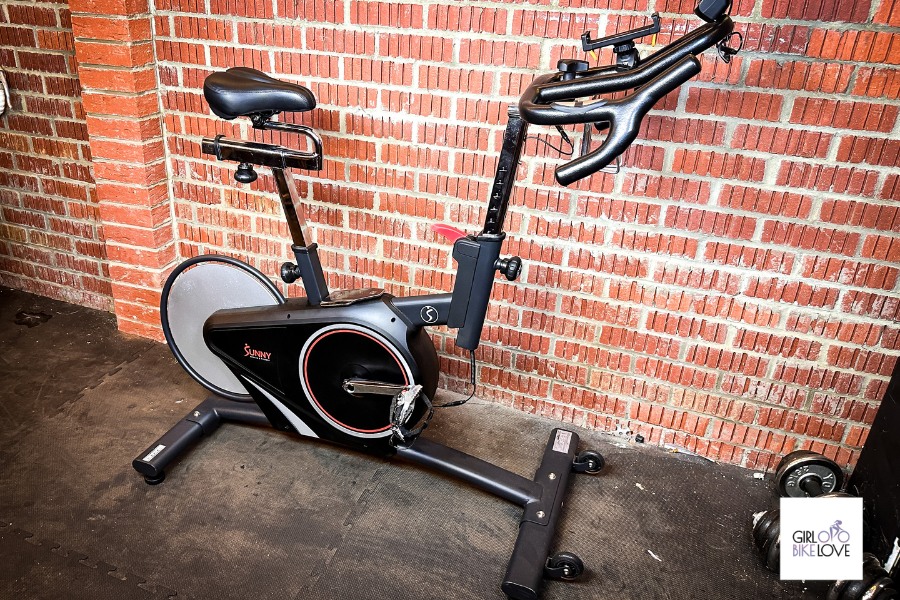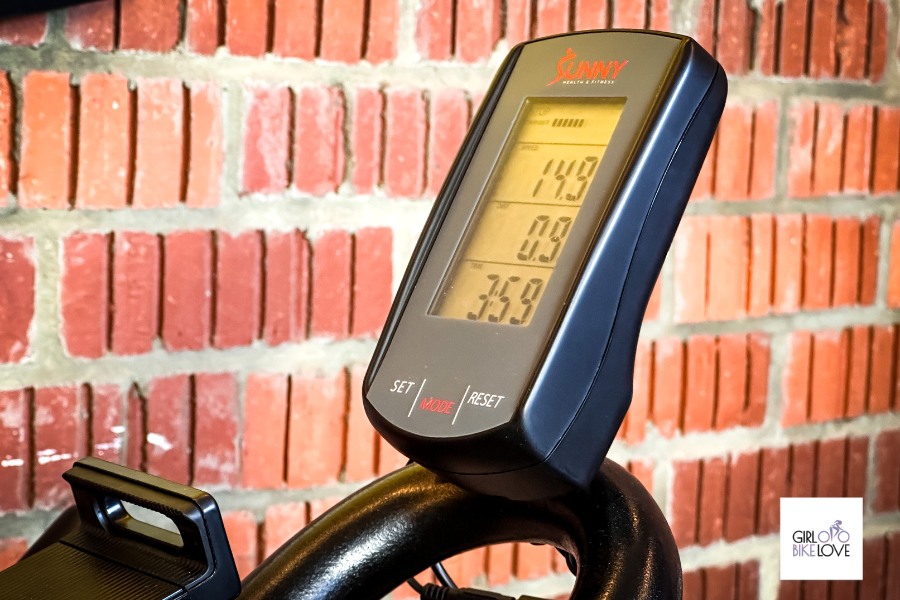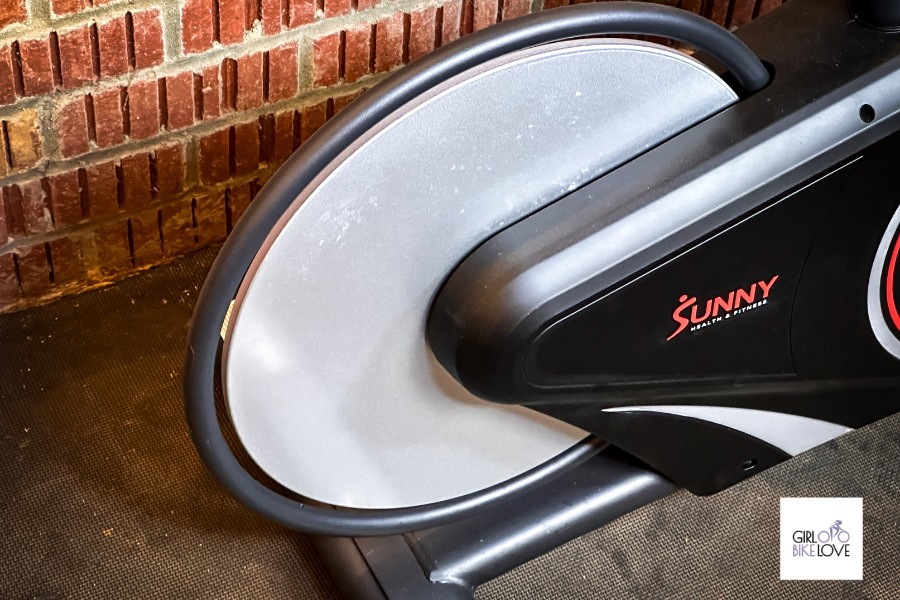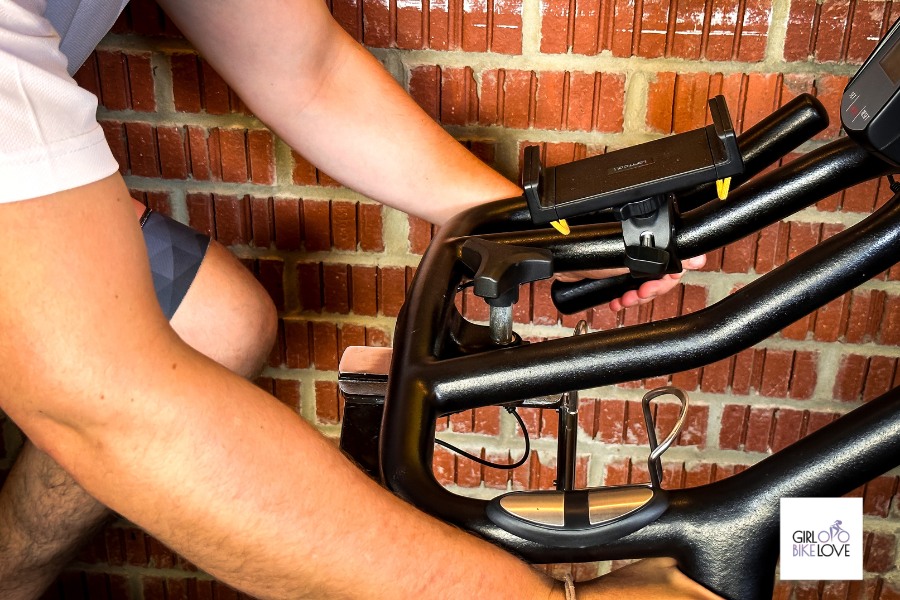When it comes to indoor cycling, the most vital piece of equipment is the bike that you’re using. Having the right bike for you can give you an amazing experience and keep you returning to the bike consistently to hit those fitness goals you might have.
The wrong bike will give you an awful experience, and it won’t excite you to get back on and tackle those more challenging rides and personal bests. Finding the right bike can be very challenging, and knowing what to look for and getting the right value for money is difficult.
This article will tell you everything you need to know, and we will be telling you the questions you need to ask yourself before buying a spinning bike. Here’s what we are going to be discussing:
- Spin Bikes Vs. Exercise Bikes
- Choosing A Spin Bike
- Recommended Spinning Bike Accessories
Check out my YouTube video on how to choose a spin bike!
Spin Bikes Vs. Exercise Bikes
The first thing that is vital to mention is the difference between a spinning bike and an exercise bike. They are openly referred to as the same thing, but there are some big differences that might change your mind when it comes to buying one.

Spin Bikes
Spinning bikes are what you will see in a spinning studio. They typically have a large flywheel and use both friction and magnetic resistance systems to challenge you as the rider. They are typically made with a more aggressive position compared to an exercise bike and often sport racing seats and handlebars. The key difference is that a spinning bike offers a standing position.
Exercise Bikes
Exercise bikes are generally what you will find in gyms in the cardio equipment section. They typically use magnetic resistance and are designed to be as comfortable as possible. They have upright riding positions, large comfortable saddles, and tall handlebars. Exercise bikes generally are not very comfortable when it comes to standing and are made to be sat on, not for standing riding.
Spin bikes and exercise bikes come in all different shapes and sizes. It’s easy to get confused between the two, and it’s important to understand their differences and the experience you will get from each.

Choosing A Spin Bike
Now for the exciting part. Here’s what you need to be asking yourself when it comes to buying a spinning bike. It’s not a bad idea to make a list and write each answer down so it’s easy to check the bikes you might be considering. We have provided one below.
Budget
The first step when it comes to looking for a bike is establishing a budget. We often find people go without a budget, and that either ends up in them spending too much and having a bike they don’t need or two little and upgrading later.
We think it’s vital to establish a budget and then go into the search for a bike, looking to get the best you can for whatever number you have in mind. For example, if you plan $1800 to spend, then try to get the best you can for that money.
Size
Next, we have size. You need first to make sure that the bike is going to fit into the space you have. A bike such as the NordicTrack S27i is not small and can easily take up half a room if you let it. Take the measurements and measure your space too.
Fit
Next, you need to consider fit. If you are very tall or quite short, check the bike’s minimum and maximum user size to ensure that it is going to work for your height. This is the same for weight, most bikes go to 300lbs and some higher, but it’s good to check.

Interactive Or Non-Interactive
Some spinning bikes come with screens or options to connect to tablets with applications. These are what we call interactive spin bikes, a good example is the Peloton and the NordicTrack S27i. They come with screens and have connectivity features such as Bluetooth.
A non-interactive spinning bike will have a basic resistance dial and a small LCD screen. If you want an interactive experience, consider spending more on a bike with a large screen or connectivity.
Connectivity
When it comes to connecting to applications, you are going to need a bike with a Bluetooth connection. This means it can transmit data across to a tablet or device, and you can enjoy applications such as Zwift or Peloton. It can really improve the experience, and it’s very motivating.
Be careful not to go for a bike that says it has connectivity, but it’s a basic Ant+ that only goes to a heart rate monitor. Many companies do this to make it sound like the bike is ready for all the big applications when often it’s not.
Magnetic Or Friction Resistance
Spin bikes come with two different resistance systems. One is called a magnetic system, and the other is called a friction system. A magnetic system is where magnets are used to create resistance through the use of eddy currents, this is what is called a frictionless system.
Then we have a friction resistance system. This is where you have a wool brake pad that will compress onto the flywheel and slow it down, creating resistance for the rider. Frictionless is normally quieter and doesn’t wear out when friction is noisier, and you might need to replace pads sometimes.

Front Or Rear Flywheel?
The flywheel is a vital part of the spinning bike, which helps create momentum and resistance. This will typically be situated on the bike’s front or rear. A front-facing flywheel is great for making a bike shorter and also means you can always see it if you have pets or children.
A rear-facing flywheel can make the bike longer, but it does look very cool and can help stabilize the bike more in the right situation. Either one is fine, but we recommend if you have pets or children and are using a rear-facing, to have it in a place such as a corner.
Style Of Bike
Spin bikes come in many different styles. You might like a classic-looking bike or want something that looks modern. Getting the right style for you is important. If the bike is going to live in your house and you will see it every day, you have to like the look of it.
You will find bikes that have drop bars and are made to replicate road bikes and some that run the spin bike bars. Having an aero position can also be a lot of fun and offer you an extra position for those longer rides you might do.

Brand
Next, we have a brand, and in our experience, you can get more from using a well-known brand compared to a cheaper lesser known brand. The product goes through more research and development, the customer service is often better, and warranties are longer and can be easier to initiate.
Warranty
It’s not fun having a broken spinning bike, and having a warranty means you are covered in the event of any problems. The longer the warranty, the better, and normally, you can expect a year on most bikes. Anything above this is considered a better-than-average warranty, in my opinion.
Spinning bikes often offer different warranty levels depending on the bike’s parts, such as 10 years frame, 2 years parts, and 1 year warranty. Try to avoid anything less than a year’s warranty. If you can get 2 or more, then that’s a lot of security.

Example Table
When looking at bikes seriously, we highly recommend using a chart such as this to see if it ticks all the boxes for you. It might seem like a lot to think about, but getting distracted when you’re excited by a bike is easy. A chart like this can ensure it’s ticking all the boxes for you.
| Your Information | Bike ( ) | Check | |
|---|---|---|---|
| Budget | |||
| Size | |||
| Fit | |||
| Interactivity | |||
| Connectivity | |||
| Resistance | |||
| Front Or Rear Flywheel | |||
| Style Of Bike | |||
| Brand | |||
| Warranty |
Recommended Spinning Bike Accessories
Now that you know how to pick the right bike, what about getting the right accessories? Here’s what we recommend as excellent accessories for your bike.
- Cycling Shoes – Gives the rider the ability to clip in.
- Sweat Towel – Great for the sessions where you give your max.
- Water Bottle – It’s vital to stay hydrated when cycling.
- Padded Shorts – They will make the ride much more comfortable. (Check our guides on the best shorts for men and women)
- Floor Mat – To protect the floor you’re riding on and make the bike quieter.
- Heart Rate Monitor – To tell you what your heart rate is while riding.
- Cadence Sensor – If your bike can’t tell you your RPM, this can. (We tried and compared the most popular cadence sensors. Check out our guide)
- Tablet Holder – For holding tablets that are running your favorite applications. (We bought and tested more than four tablet holders)
- Padded Seat Cover – If your saddle isn’t working for you, then this will help. (We have tested the best-padded seat covers. Checkout our guide and video!)
- Power Meter Pedals – To give you power data.
These accessories are going to add so much value to the cycling experience. We highly recommend each one.

A Final Note
Finding the perfect spinning bike for you doesn’t have to be difficult, in fact, it’s easy when you know what you’re looking for. We hope through this article, you have all the information you need to get your perfect spinning bike.
